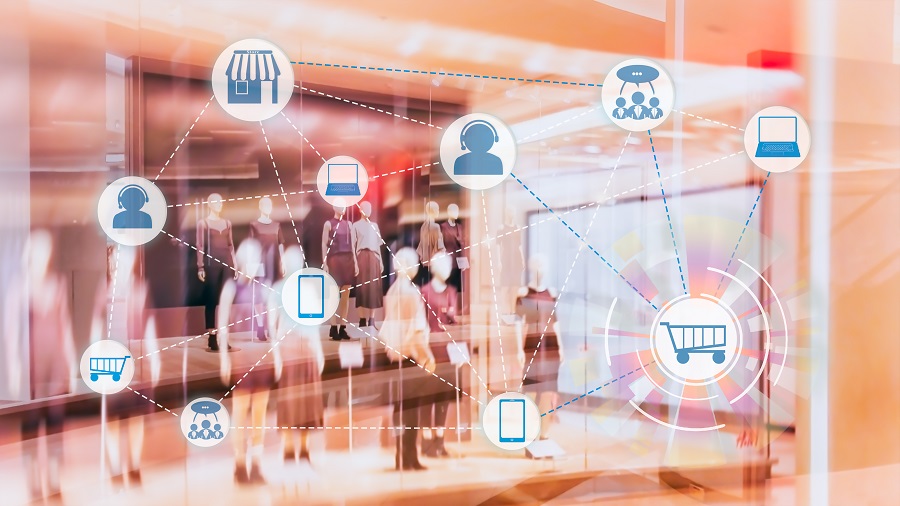19 Dec

As a retailer, having a physical store is no longer enough in this modern era. Customers now expect to be able to shop seamlessly across different channels – whether that’s in-store, online, or via mobile. That’s why having a well-integrated point of sale (POS) system is so important for any business with a multichannel strategy.
In this article, we wanted to explore some of the key multi-store POS software features that multichannel retailers should ideally look for. A modern POS needs to not only handle tasks at the checkout counter but also connect the entire retail operation, both online and offline. Let’s take a closer look:
Omnichannel Inventory Management
Perhaps the most fundamental capability a good multi-store inventory management software needs to provide is unified inventory management across all sales channels. Inventory reconciliation is a nightmare for retailers without integrated systems. Your customers don’t care whether the item they want to purchase is physically located in the store warehouse or distribution center – they just want it and they want to be able to buy it whenever and wherever is convenient for them.
With omnichannel inventory management, all items and sizes are visible regardless of actual location. Online orders can then be seamlessly fulfilled from any location – whether it’s shipping directly from the warehouse or allowing for in-store pickup. Likewise, purchases made in-store can be transferred from other locations as needed. This type of ‘ship from anywhere’ flexibility is the table stakes for meeting rising consumer expectations today.
Also Read: Retail Inventory Method
Omnichannel Order Management
Closely related to unified inventory is the need for integrated order management across channels. The POS needs to not only handle traditional in-store transactions but also link to your ecommerce platform and payment processing to provide a consistent order workflow online and off.
This allows things like combining shipments for multiple orders, fulfilling special customer requests, and providing omnichannel customer service – for example, allowing customers to return online purchases at a local store. It also streamlines reporting and analytics. Without this integration, you’d have little visibility into overall sales performance and customer behavior across all channels.
Payment Processing Features
Naturally, any multi-channel retail software integrating physical and digital sales also needs robust payment processing functionality. As mobile payment options like tap-and-pay grow in popularity, being able to accept a wide range of payment types – including digital wallets, mobile cards, as well as traditional cash, checks, and credit cards – is key.
Look for integrated payments that can facilitate not only in-store but also BOPIS (buy online, pick up in-store) and curbside scenarios. Features around automated charges, refunds, and exchanges ensure a seamless customer experience regardless of how and where a transaction began. And integrated fraud prevention tools give merchants better control over order authorization.
Mobile POS Capabilities
With the rise of smartphones, retailers also benefit greatly from mobile POS functionality. Equipping sales associates with tablets or other mobile devices allows for things like inventory lookups, price checks, and basic transaction processing right on the sales floor or even in other areas of the store.
This type of solution extends a retailer’s reach beyond traditional checkout counters. Associates can greet customers as they enter and help them throughout their shopping journey. Mobile POS also enables new types of frictionless checkout experiences like “scan as you shop” – which further enhances customer service and satisfaction in busy physical stores.
Built-in Analytics
No multichannel strategy is complete without analytics to glean insights from sales data. The best POS systems go beyond basic reporting and provide powerful built-in analytics dashboards. These allow merchants to analyze things like top-selling items, conversion rates, customer purchase histories, and more – broken out by location, employee, time period, and other dimensions.
Armed with these kinds of actionable business intelligence insights, retailers can continually optimize merchandising, pricing, inventory, and more – both online and off. They can nail down what’s actually driving sales versus what’s just taking up space on shelves or online. The analytics help merchants maximize efficiency and growth across every sales channel.
If you’re looking for retail POS software for multi-stores that ticks all the right boxes for modern multichannel retailing, we highly recommend checking out Hana Retail. Our integrated platform seamlessly connects physical and digital commerce with best-in-class omnichannel capabilities. Sign up FREE today!





